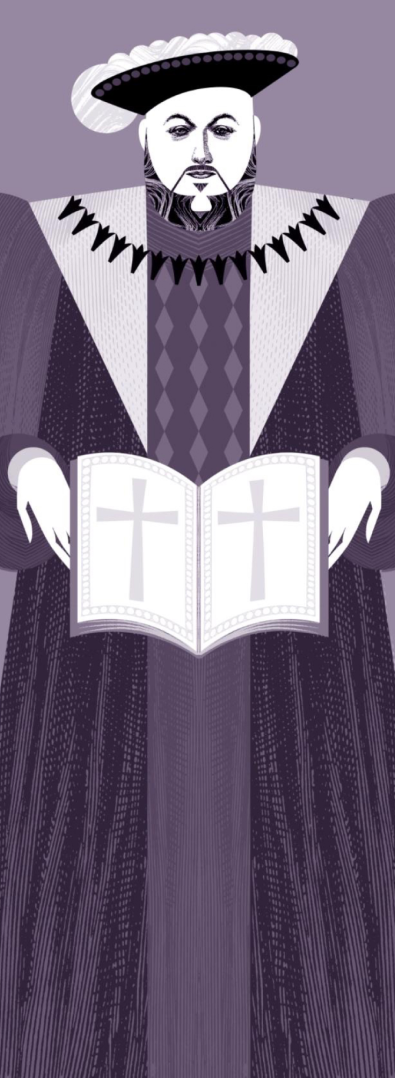A Walk Through Time activity sheets
Click here to find a programme of curriculum linked classroom activities and resources to support the ‘A walk through time’ resource.
Download activity sheetsIn the year 1534 King Henry VIII declared himself head of the Church in England and took control of church affairs. From the year 1536 his officials went around the country closing monasteries and claiming their wealth for the crown.
The shrine of Saint Thomas was especially problematic for King Henry VIII. By this time, Becket was being remembered as someone who lost his life standing up to the royal authority – something Henry did not want to encourage. Becket was declared a banned saint and in the year 1538 Becket’s shrine was destroyed.
The monastery at Canterbury Cathedral was dissolved (closed) in the year 1540. In the year 1541, Henry installed a new Dean and Chapter at Canterbury Cathedral. Of the many monks who had lived there only 28 remained to join the new community.
The shrine of Saint Thomas was especially problematic for King Henry VIII.

Henry VIII’s role as the Supreme Head of the Church in England meant that he was independent of the Pope’s authority in Rome. In 1539 the first official Bible in English was produced. The most striking part of the this Bible the frontispiece which features a heavily symbolic image of the new Church of England. It shows the King presenting the Bible to clergy and people, a forceful message about royal supremacy.
In 1509 AD Henry VIII had married the Catholic Catherine of Aragon but she had failed to give him a male heir. Henry wanted to divorce Catherine and instead marry Anne Boleyn, but the Pope condemned his actions. In order to pursue his divorce Henry separated himself from the Catholic Church and in 1534 AD he declared himself head of the Church of England.
Over 800 monasteries and religious houses were dissolved by Henry during the reformation (when the Church of England split from the Catholic Church in Rome). The wealth from these monasteries helped Henry fund a war with France.

Saint Thomas’s shrine was located here from 1220 -1538. A candle marks the spot. The shrine would have been loaded with offerings of gold, silver and jewellery brought by the pilgrims who approached the shrine on their knees.
Built between 1504 and 1521 probably in honour of Prince Arthur, King Henry VIII’s elder brother. You can see the Tudor coats-of-arms. On Arthur’s death Henry married his brother’s wife Katherine of Aragon. The gate was damaged in 1643 by the Puritans (a group of Protestants in the sixteenth and seventeenth centuries who believed in a simpler form of worship) and later restored.
The ruins of the monastery’s refectory kitchen, brewery and bakery can still be seen.
Click here to find a programme of curriculum linked classroom activities and resources to support the ‘A walk through time’ resource.
Download activity sheets© Dean and Chapter of Canterbury Cathedral

